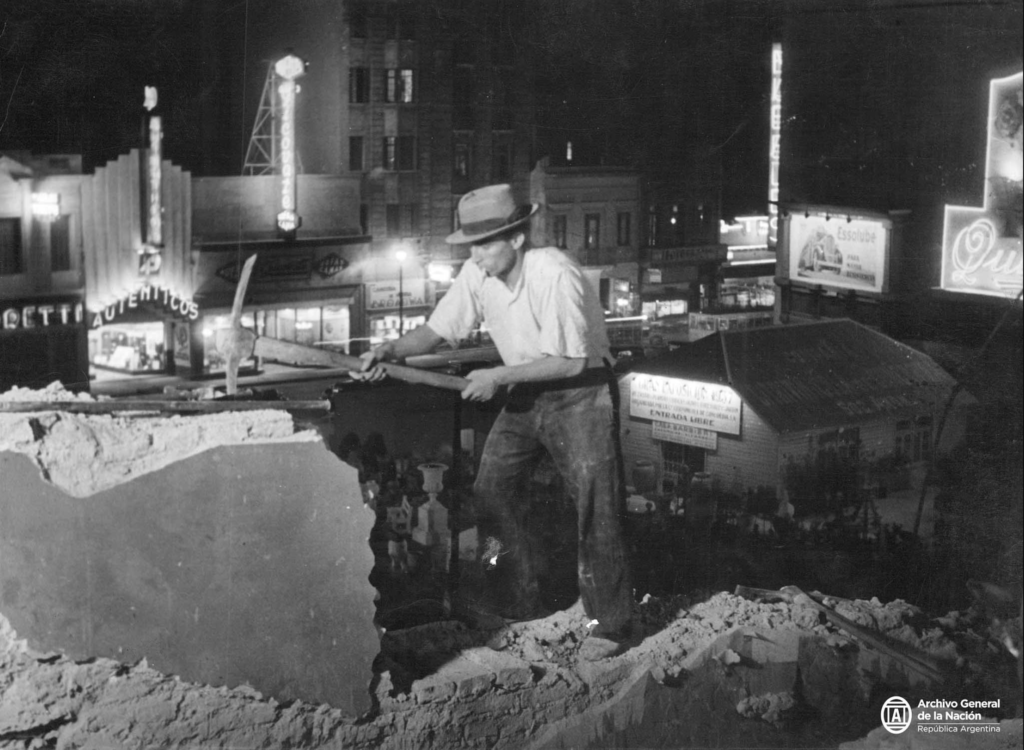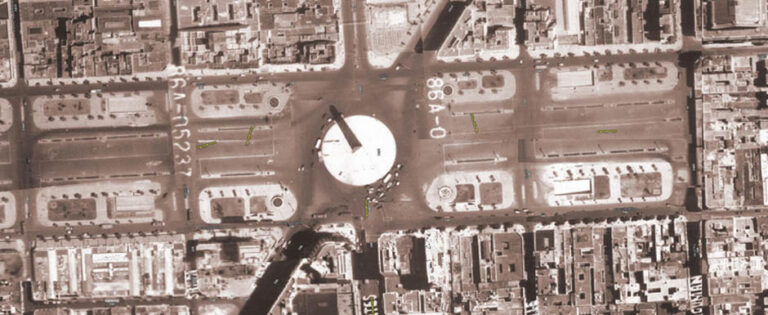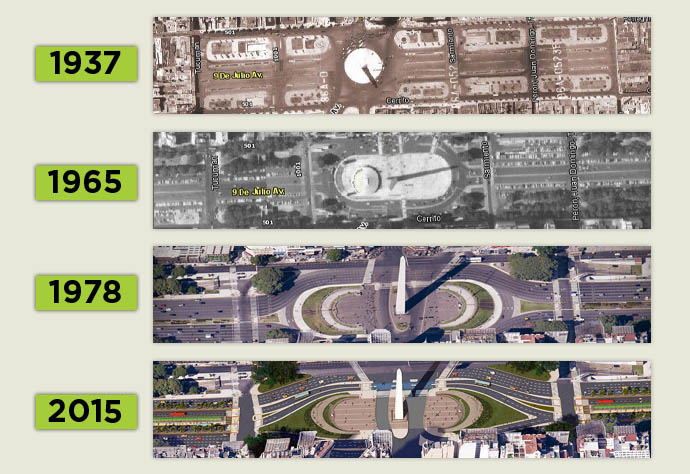If you’ve been to Buenos Aires, it’s difficult to miss the Avenida 9 de Julio. Linking the north and south of the City of Buenos Aires, the 9 de Julio is at the very heart of the city. It may surprise you to hear, however, that despite its importance in today’s world, it hasn’t actually existed for that long.
The 9 de Julio is known for being the world’s widest avenue, with a width of 140 metres (459 feet). Connecting the neighbourhoods of Constitución (in the south) and Retiro (in the north), the 9 de Julio is about 3km (1.9 miles) long. At its very centre, is the famous Obelisco, which was inaugurated just a year before the construction of the avenue began. The name, 9 de Julio, was chosen to represent Argentina’s day of independence, 9th July 1816.
Along the avenue are many other famous monuments and historical buildings, such as the Teatro Colón and the Ministerio de Desarrollo Social. Keep reading to learn more about the history and development of the Avenida 9 de Julio!
Construction of the 9 de Julio
In the early 20th century, it was decided that Buenos Aires would have a new avenue constructed, to unite and modernise the city. In 1912, a law was passed to allow its construction, although it wasn’t until 1937 that the work actually began, during the presidency of Agustín P. Justo.
The idea of the 9 de Julio wasn’t only to improve the flow of traffic in the city, but also to symbolise Argentina’s position on the global stage as a modern, prosperous nation.
The original plan was to begin building the avenue over 5 blocks, between the streets Bartolomé Mitre and Tucumán (pictured below).

The inauguration of the 9 de Julio occurred on 12th October 1937. It involved a gathering of roughly 100,000 people, along with the release of 1000 pigeons, with their wings painted blue. There was also a live orchestra and dances that continued into the night.

The 9 de Julio took nearly 50 years to complete
The construction of the 9 de Julio took many years to complete due to frequent delays, political changes and the need to demolish large portions of the city to make way for the avenue.
After several waves of gradual expansion over several decades, the southern expansion of the avenue was finally completed in the 1970s, where it would reach Avenida del Libertador. This marked the completion of the full length of the avenue.

The entire process involved the demolition of 28 blocks, causing significant displacement of residents and businesses. An exact number is difficult to come by, but we’re probably talking about thousands or tens of thousands of people losing their homes as a result of the project. Residents were of course compensated for having to relocate, although in the later years of the project especially, most people were relocated to areas much further away from the city centre.
The video below shows the reaction of different residents and business owners to the construction of the avenue:
Understandably, many residents were angry and frustrated, although the vast majority were actually in favour of the project. The main worry of residents was where they were going to be relocated to.
The 9 de Julio continues to evolve
Today, Avenida 9 de Julio is more than just a roadway; it has become part of the very heart of Buenos Aires. Thousands of vehicles pass through the avenue every day, and it serves as a hub for public transport, including the city’s Metrobus system, which runs along dedicated lanes on the avenue. The Metrobus system, introduced in 2013, has significantly reduced travel times on the 9 de Julio and is used by over 250,000 passengers daily.
Over the years, the 9 de Julio has become (like the Obelisco) an important meeting point for national celebrations, protests and political rallies. Following Argentina’s win in the 2022 World Cup, over 4 million people flooded the streets of the 9 de Julio in celebration.
On the day of Argentina’s celebrations of its World Cup win, the plan was originally for the players to travel in an open-top bus from Ezeiza to the Obelisco. However, due to the sheer amount of people gathered on the Avenida 9 de Julio, it was impossible for the bus to actually reach its destination, which left the 4 million-plus people waiting on the avenue very disappointed!
When crossing the 9 de Julio, you can expect to stop at 2 or 3 crossing lights, given the width of the 16 lane avenue. You should also be careful at certain points on the 9 de Julio, as there are some areas which are hotspots for pickpockets and other thieves. Especially when waiting at traffic lights on the avenue, it’s important to keep your windows up and your head on a swivel. It’s not uncommon for people to go up to cars and snatch peoples’ phones out their hands.
In recent years, the government has implemented urban development projects to make the avenue more pedestrian-friendly, adding green spaces and wider pavements. These projects have aimed to balance the avenue’s role as a busy transit route with its cultural and historical significance. Created in 2016, the famous BA sign is a popular picture spot for tourists!
The 9 de Julio is a living monument to Argentina’s past, present and future. Its construction represents the country’s aspirations in the 20th century, a time when Argentina was on track to assert itself as a modern global power. Whilst the avenue continues to evolve, it remains at the heart of Buenos Aires.


